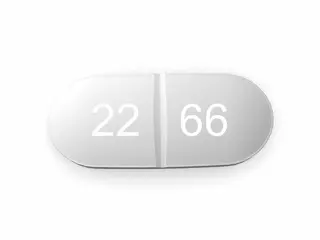Muscle Relaxant
Effective muscle relaxants to relieve tension, reduce muscle pain, and improve mobility. Shop trusted brands for fast, long-lasting relief and support your recovery today.
Muscle relaxants are a group of medications used to relieve muscle spasms, stiffness, and pain. They work by depressing the central nervous system or directly affecting muscle function. These medicines are often prescribed for conditions such as back pain, neck pain, multiple sclerosis, and spinal cord injuries. Among the most popular muscle relaxants are Baclofen, Robaxin, and Zanaflex. Each has unique properties and uses, making them suitable for different patients and conditions.
Baclofen is a widely used muscle relaxant. It works by acting on the spinal cord nerves to reduce muscle spasticity. This drug is commonly prescribed for people with multiple sclerosis and spinal cord injuries. Baclofen is available in tablet form and as an intrathecal pump for severe cases. Patients often report good relief from muscle stiffness and spasms when using Baclofen. Side effects can include drowsiness, dizziness, and weakness. It is important to start with a low dose and gradually increase it to avoid sudden withdrawal symptoms such as hallucinations or seizures.
Robaxin, known generically as methocarbamol, is another popular option. It is used for the relief of muscle pain and discomfort from acute musculoskeletal disorders. Robaxin works by depressing the central nervous system. It does not directly relax muscles but reduces nerve impulses that cause muscle spasms. This medication is usually taken orally and starts to work within 30 minutes to an hour. Common side effects include drowsiness, dizziness, and nausea. Robaxin is often combined with rest, physical therapy, and pain relief medicines to achieve the best results.
Zanaflex, or tizanidine, is a muscle relaxant that acts on the central nervous system to relieve muscle spasticity. It is especially effective for patients with multiple sclerosis and spinal cord injuries. Zanaflex works by blocking nerve signals that cause muscles to contract uncontrollably. The drug is taken by mouth, usually in tablet or capsule form. Patients often feel relief within an hour of taking the medication. Side effects include dry mouth, drowsiness, and low blood pressure. This medication is best used under close medical supervision, especially for people with liver problems or those taking other medications that affect blood pressure.
All three medications have shown effectiveness in treating muscle spasms. However, their use depends on the underlying condition and patient tolerance. Baclofen is often preferred for sustained muscle spasticity. Robaxin is typically used for short-term pain relief from muscle injuries. Zanaflex offers a balance between efficacy and side effects, making it suitable for chronic spasticity treatment. In all cases, patients should follow their doctor's dosage instructions carefully. Overuse or sudden discontinuation can lead to serious complications.
Muscle relaxants, including Baclofen, Robaxin, and Zanaflex, are not addictive but can cause dependence if misused. They may cause sedation, so patients should avoid driving or operating heavy machinery until they know how the drug affects them. It is also important to inform the doctor about any other medications being taken, as interactions can increase side effects.
In summary, Baclofen, Robaxin, and Zanaflex each have unique roles in managing muscle spasticity and pain. Baclofen is effective for chronic muscle stiffness related to neurological conditions. Robaxin is useful for acute muscle pain and injury. Zanaflex provides an option with a shorter half-life, allowing more control over muscle relaxation periods. Patient feedback and clinical reviews support their continued use under physician supervision.
Choosing the right muscle relaxant depends on the medical condition, severity of symptoms, and individual tolerance. Consultation with a healthcare provider ensures proper diagnosis and treatment plan. Muscle relaxants can significantly improve quality of life by reducing pain and improving mobility. Always adhere to prescribed dosage and report any adverse effects promptly.


